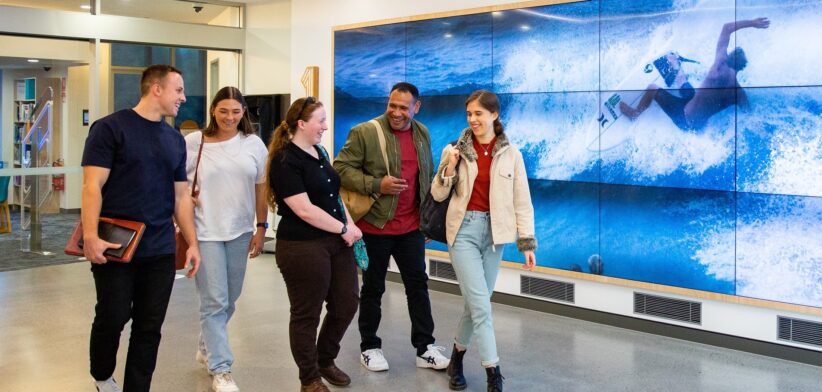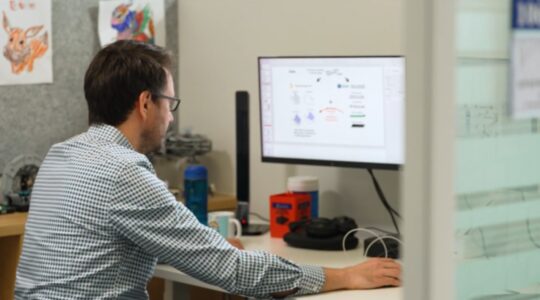A bold new university learning model is showing highly promising early results in academic outcomes and student satisfaction.
The Southern Cross Model, first introduced at Southern Cross University as a pilot in 2021, smashes apart the traditional concepts around lectures, exams and semesters.
Instead of four subjects simultaneously, students take a maximum of two subjects at a time in a six-week term. Formal lectures are replaced with discussion groups, fully-flexible learning and assessments that encourage students to participate actively in their learning.
In making the changes, Southern Cross embraced and accepted the so-called “six week cliff” as a crucial moment when student engagement notoriously falls off.
In the first six months of the pilot, students involved in the trial reported a 92.2 percent satisfaction rate, six percent higher than the university’s overall satisfaction rate.
Off the back of this early success, Southern Cross University has extended the model to all of its courses and is confident it has found a model that is purpose-built for the needs of 21st Century students.
From the traditional approach in 2019 to the Southern Cross Model approach in 2023, pass rates increased from 70 to 88 percent and the average student Grade Point Average (GPA) leapt from 3.2 to 4.6, an increase of 20 percent.
Pro Vice-Chancellor (Academic Quality) Professor Thomas Roche said universities could often be traditional and slow to innovate.
However, it was becoming increasingly clear that students needed new ways of learning to stay engaged and learning institutions needed to be prepared to evolve their methods.
“The traditional teaching model that has been the mainstay of university education in Australia and abroad for centuries does not best serve the needs of today’s university students,” he said.
“A more relevant approach was needed to reflect today’s super-connected, on-demand, media-rich, and real-time world – one that builds upon all we know about how learners succeed in their study.”
In fact, as far back as the 1300s a famous University of Bologna painting depicts the very mixed experience of students in lecture theatres and the passive form of learning it represents.
Professor Roche said the painting showed some of the students at the front of the class taking notes and seemingly in awe of the lecturer.
“But as you go back further (in the painting), you find some of the students are talking to each other,” he said.
“Up the back you’ve got a couple sleeping. And I think you would see that experience in lecture theatres today, 700 years later.”
Professor Wilson said, while traditions like lectures still had their place, students were questioning why they had to take time to travel and sit with hundreds of other students when technology provided other options.
The Southern Cross Model has the following characteristics:
- Six terms of six teaching weeks per academic year, with a two week break between terms.
- Full-time students typically study eight units in a year – with only two units per term over four consecutive terms.
- The shorter teaching term and more focused structure enables students to attain their learning outcomes more quickly.
- A minimum of six units and a maximum of 12 units per year in a full-time study load.
- Students engage in “active, interactive and discussion-based learning” rather than attending lectures.
As well as the overall improved results from the new model, individual groups also showed remarkable improvement.
International students, for example, achieved a pass rate of 88 percent in 2023, up 18 percent on the pre-pandemic rates.
SCU analysis also shows statistically significant increases in pass rates for Indigenous students (10 percent increase), students registered with a disability (7.9 percent), from low socio-economic areas (7.6 percent), from regional/remote areas (5 percent) and first-in-family (3.7 percent).
An analysis of 13,000 grade in 2022 revealed a 16 percent increase in student success rates (passing a unit of study) and significantly declining fail rates.
More details can be found on the Southern Cross University website









